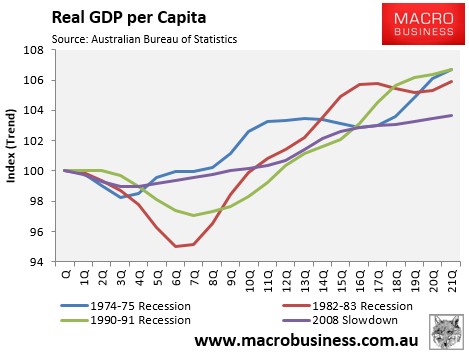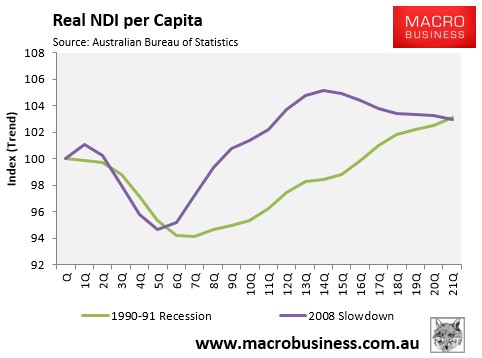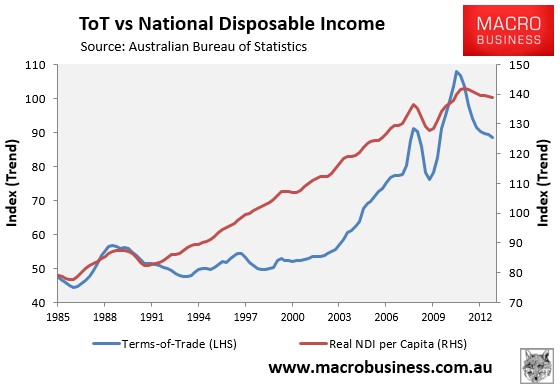
Following on from today’s national accounts release by the Australian Bureau of Statistics (ABS), I thought it would be interesting to once again benchmark Australia’s economic recovery since the Global Financial Crisis (GFC) against the recessions of the 1970s, 1980s and the 1990s. For the purpose of the analysis, I have chosen to use real GDP per capita as the measure, since it removes growth distortions from population growth and inflation, and better reflects economic welfare than the headline real GDP figure typically quoted by economists.

As shown by the above chart, which measures real GDP per capita using the ABS’ trend measure, it took 9 quarters (September 2010) before GDP per capita recovered to its June 2008 level. And 21 quarters later (September 2013), GDP per capita is only 3.7% above the level in June 2008.
While the 2008 slowdown (recession in terms of real GDP per capita) was not as severe as the previous three episodes, the recovery easily been the weakest of the four episodes. The trends look likely to widen the gaps further.
Real per capita national disposable income (NDI) – arguably, an even more useful measure of welfare – initially grew strongly post-GFC, but has recently fallen back to earth, as shown by the below chart (data unfortunately does not exist for the 1970s and 1980s recessions):

Per Capita is now only 2.9% higher than June 2008, compared with 3.1% growth at the same point after the early-1990s recession with obviously diverging trends.
The reason for the strong recovery and more recent decline in real NDI per capita is the sharp rise and then fall in the terms-of-trade, which rose by 41% in the two years to September 2011, but has since fallen by 18% (see next chart).

As the terms-of-trade continues to retrace back towards its longer-run average, it will drag on NDI growth, meaning that Australia is likely to underperform on this measure too.

